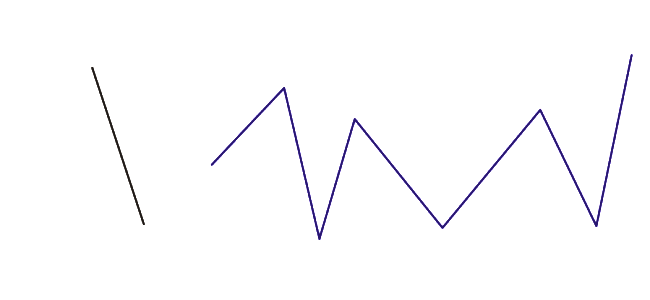Precision in Progress: A Comprehensive Guide to Drawing and Modifying Straight Lines Using Object Coordinates in CorelDRAW

Introduction:
CorelDRAW, an influential graphic design software, provides designers with a robust toolkit to manifest their creative visions. Among its diverse features, the ability to draw or modify straight lines using object coordinates stands as a fundamental skill. This extensive guide aims to delve into the nuances of working with straight lines using object coordinates in CorelDRAW. Whether you’re a novice seeking foundational insights or an experienced designer refining your skills, this comprehensive exploration has something for everyone.
I. Unveiling the Essence of Object Coordinates:
- Decoding Object Coordinates: Object coordinates are numerical values that precisely define the position and dimensions of an object within the design workspace. When dealing with straight lines, these coordinates encompass parameters such as X (horizontal position), Y (vertical position), line length, and angle.
- The Imperative of Precision: In graphic design, precision is key. Object coordinates offer a systematic approach to ensure accuracy and uniformity in the creation and modification of design elements, particularly straight lines.
II. Basic Techniques for Drawing Straight Lines Using Object Coordinates:
- Selecting the Line Tool: Initiate the process by choosing the Line Tool from the toolbox. Represented by a straight line icon, this tool is commonly located in the left sidebar of the CorelDRAW workspace.
- Entering Object Coordinates: Once the Line Tool is selected, input the desired object coordinates in the property bar or options bar at the top of the workspace. Object coordinates typically include values for X, Y, line length, and angle.
- Drawing the Straight Line: With the object coordinates specified, click and drag in the design workspace to draw the straight line. CorelDRAW will create the line with precise dimensions and position based on the entered coordinates.
III. Modifying Straight Lines Using Object Coordinates:
- Selecting the Line: To modify an existing straight line, use the Pick tool to click on the line, ensuring it becomes the active selection in the design workspace.
- Accessing the Object Coordinates: With the line selected, navigate to the property bar or options bar to view and edit the object coordinates. Adjust the values for X, Y, line length, or angle as needed to implement the desired changes.
- Applying Changes: After modifying the object coordinates, press Enter or click outside the property bar to apply the changes. The straight line will be instantly updated based on the adjusted coordinates.
IV. Utilizing Object Manager for Line Coordinates:
- Understanding the Object Manager: The Object Manager serves as an organizational powerhouse, displaying the hierarchy of objects within the document. Use it to locate and select lines for precise modifications using object coordinates.
- Streamlining Batch Editing: In scenarios where multiple lines require similar adjustments, leverage the Object Manager to select and modify multiple objects simultaneously. This approach ensures efficiency and consistency in design.
V. Advanced Techniques for Object Coordinates:
- Relative Coordinates for Lines: CorelDRAW allows the use of relative coordinates based on the current position of an object. This technique is valuable for creating patterns, grids, or symmetrical designs with interconnected lines.
- Coordinate Transformations: Explore coordinate transformations to rotate or skew lines using specific coordinate values. This advanced technique provides designers with creative flexibility in shaping and arranging lines within the design.
VI. Troubleshooting and Best Practices:
- Verifying Unit of Measurement: Before entering object coordinates, ensure the correct unit of measurement (e.g., inches, millimeters, pixels) is selected for consistency in dimensioning. Use the options bar to switch between units if necessary.
- Undo/Redo Functionality: The Undo (Ctrl + Z) and Redo (Ctrl + Y) commands serve as a safety net for reverting actions. If unintended modifications occur, use these commands to navigate through the editing history.
VII. Collaboration and Object Coordinates:
- Sharing Design Specifications: In collaborative design projects, share specific object coordinates with team members to ensure alignment on the precise dimensions and positions of design elements.
- Version Compatibility: Be mindful of version compatibility when sharing designs. Object coordinate features may vary between different versions of CorelDRAW, potentially affecting the accuracy of transferred coordinates.
VIII. Documenting Design Processes:
- Creating Tutorials and Guides: Document the process of drawing or modifying straight lines using object coordinates for educational or collaborative purposes. Tutorials, design process documents, or annotations within the design file can guide team members or serve as future references.
- Maintaining Design Consistency: Adhere to a standardized approach when working with object coordinates, ensuring a consistent unit of measurement, alignment strategy, and precision standards across the entire project.
Conclusion:
In conclusion, the ability to draw or modify straight lines using object coordinates in CorelDRAW is a fundamental skill that contributes to precision and consistency in graphic design. By mastering the techniques outlined in this guide, designers can achieve accurate and visually appealing compositions. Embrace the precision that object coordinates offer, and let your designs flourish with accuracy and sophistication in CorelDRAW.






